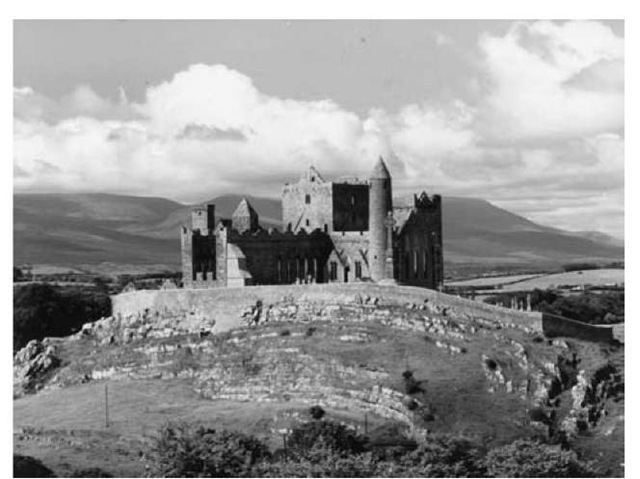Twenty years after the synod of Kells had received papal confirmation for the new organizational structure for the church in Ireland, another synod took place at Cashel. This, however, was a synod of a different kind; it assembled at the request of King Henry II of England, shortly after his arrival in Ireland on October 17, 1171. He first went to Lismore, the see of Gilla-Crfst Ua Connairche, then papal legate in Ireland. Afterward he proceeded via Cashel to Dublin, and thus had the opportunity to meet two archbishops, Donnchad Ua hUallachain (Cashel) and Lorcan Ua Tuathail (Dublin). Through these contacts arrangements were put in place for a synod to meet at Cashel soon afterward.
We have to rely on non-Irish sources, in particular Giraldus Cambrensis, for information on the synod, as the Irish annals curiously ignore it. This may have a bearing on how it has come to be interpreted by historians. We are told that the papal legate, Gilla-Crist, presided, and the archbishops of Cashel, Dublin, and Tuam (Cadla Ua Dubthaig)—together with the bishops of their provinces, other bishops, and clergy—attended. Due to age and infirmity, the archbishop of Armagh, Gilla-Meic-Liac, was not present, but he later gave his consent to its decisions. Henry II apparently did not attend and was represented instead by Ralph, abbot of Buildwas; Ralph, archdeacon of Llandaff; Nicholas, the king’s chaplain; and other royal officers.
The decrees enacted were:
• the laity to repudiate spouses related to them by kinship or marriage and to adopt lawful marriage contracts;
• infants to be catechised before the doors of the church and baptised in consecrated fonts in baptismal churches;
• parishioners to pay tithes of animals, crops, and other produce to their own church;
• church property to be free from all exactions made by secular magnates;
• clerics, whose kinsmen are obliged to contribute to composition payments, to be exempt from such contributions;
• all the faithful, in their final illness, to make a will in the presence of their confessor and neighbors in the manner specified;
• those who die after a good confession to receive their due in terms of masses, vigils, and manner of burial.
It was also decided that in Ireland, all matters relating to religion were to follow the observances of the English church. Some have interpreted this as referring to liturgical practices only; others see it as encompassing more, and therefore being much more fundamental, especially since it is claimed that the Irish bishops swore fealty to Henry at around this time. Given the absence of Irish sources it is difficult to be sure what the position of the Irish bishops was, either collectively or individually, although we know that they had communicated concerns about the state of the Irish church to Pope Alexander III. But from Henry’s point of view, the synod was a diplomatic success. He was able, through Archdeacon Ralph, to report to the pope on the assistance he had received from the bishops and to have, in return, papal instructions issued to the Irish bishops and kings, instructing them to support his rule in Ireland.
St. Patrick’s Rock, Cashel, Co. Tipperary

